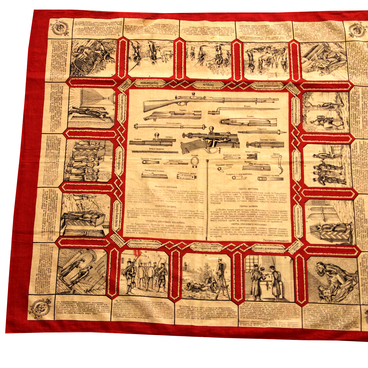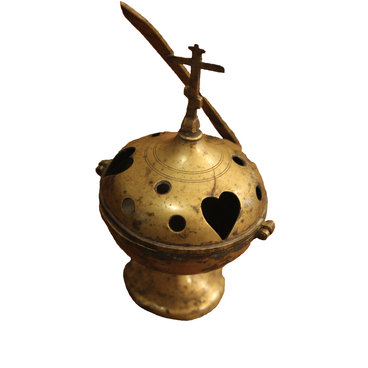Some church items can be touched only by priests. One of them is the ciborium, a small chest used by priest to carry the holy sacraments for communion if a person receiving the Eucharist is seriously ill and unable to attend the Divine Liturgy in a church on their own. In the old days, both ciboria and icons were brought to the weak for communion. To this end, a portable sacrarium was attached to the casing of a miraculous icon.
Contemporary ciboria in the Russian Orthodox Church most often have the shape of a bowl. They are used to carry the Divine Body and Blood. Therefore, bowls are made with special screw covers. Inside the ciborium, there is a chalice used to give the Eucharist, and a sacramental spoon with a cross at the end of the handle. The ciborium is usually carried in a special embroidered bag.
The Christian tradition to administer communion to parishioners who could not attend the Divine Liturgy began in the second century A.D. The use of ciboria was first mentioned in this period. In Russia, the Communion outside the liturgy was first administered in the 17th century.
Traditionally, ciboria were made of silver, or, in some cases, of tin or wood. As a rule, they had the shape of a small rectangular monstrance. For example, the inventories of Cathedral of St. Sophia in Novgorod dating back to the 18th century had several records referring to a smooth silver monstrance without a cover. The inner sides of the ciboria were gilded and sometimes decorated with precious stones, as, for example, emeralds or rubies.
The ciborium presented at the exposition was brought to the museum from St. George’s Cathedral built by Ivan Korobov, the local government head from Kaluga, in 1701. It is a five-domed church with its upper floor occupied by one aisle in the name of the Elevation of the Holy Cross. The lower floor houses three aisles: one in the name of St. George the Victorious, the second one in the name of the Icon of the Mother of God Assuage My Sorrows and the third one in the name of John the Baptist. The Cathedral is the place where Kaluga’s main sacrament, the miraculous icon of Our Lady of Kaluga, is kept.
Contemporary ciboria in the Russian Orthodox Church most often have the shape of a bowl. They are used to carry the Divine Body and Blood. Therefore, bowls are made with special screw covers. Inside the ciborium, there is a chalice used to give the Eucharist, and a sacramental spoon with a cross at the end of the handle. The ciborium is usually carried in a special embroidered bag.
The Christian tradition to administer communion to parishioners who could not attend the Divine Liturgy began in the second century A.D. The use of ciboria was first mentioned in this period. In Russia, the Communion outside the liturgy was first administered in the 17th century.
Traditionally, ciboria were made of silver, or, in some cases, of tin or wood. As a rule, they had the shape of a small rectangular monstrance. For example, the inventories of Cathedral of St. Sophia in Novgorod dating back to the 18th century had several records referring to a smooth silver monstrance without a cover. The inner sides of the ciboria were gilded and sometimes decorated with precious stones, as, for example, emeralds or rubies.
The ciborium presented at the exposition was brought to the museum from St. George’s Cathedral built by Ivan Korobov, the local government head from Kaluga, in 1701. It is a five-domed church with its upper floor occupied by one aisle in the name of the Elevation of the Holy Cross. The lower floor houses three aisles: one in the name of St. George the Victorious, the second one in the name of the Icon of the Mother of God Assuage My Sorrows and the third one in the name of John the Baptist. The Cathedral is the place where Kaluga’s main sacrament, the miraculous icon of Our Lady of Kaluga, is kept.



